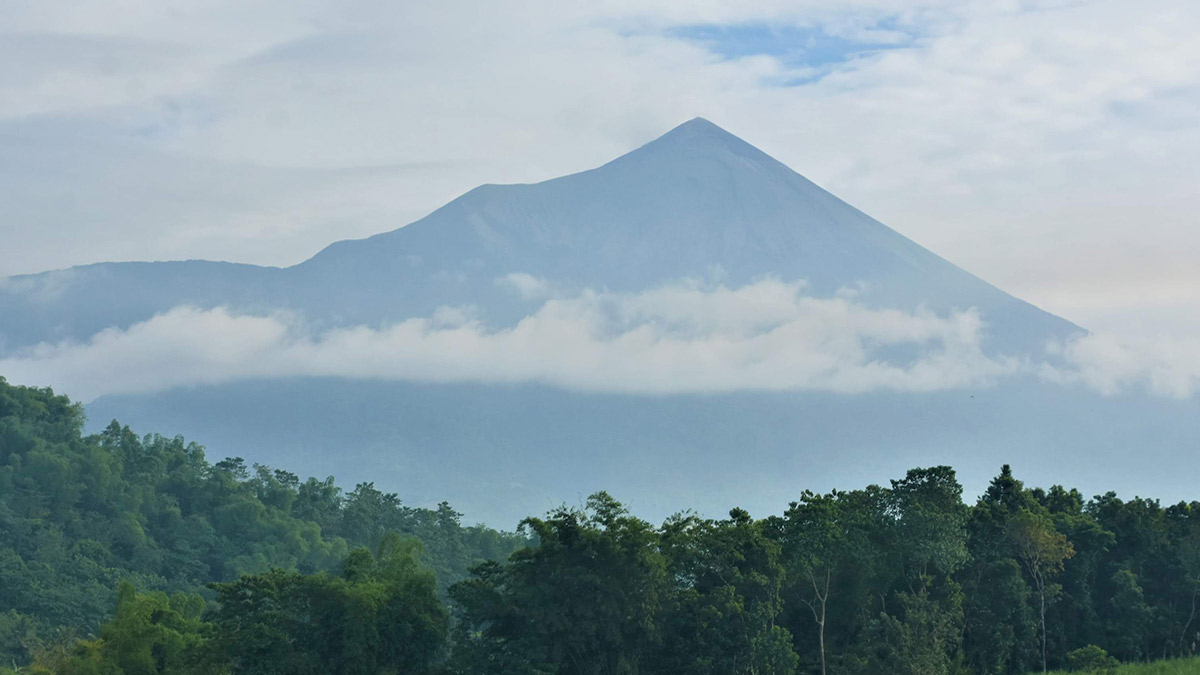
RESTIVE Kanlaon Volcano looks calm in this aerial photo taken on Monday but it remains restive and still under alert level 2, the Philippine Institute of Volcanology and Seismology says in a briefing on Monday. — RICHARD MALIHAN/CONTRIBUTOR
BACOLOD CITY — The Philippine Institute of Volcanology and Seismology (Phivolcs) on Tuesday warned of elevated sulfur dioxide emissions from Mt. Kanlaon on Negros Island.
Its gas emission averaged 10,074 tons on Monday, the fifth highest emission from the volcano recorded since instrumental gas monitoring began, said Mari-Andylene Quintia, Phivolcs resident volcanologist at the Kanlaon Volcano Observatory.
Sulfuric fumes were reported in Barangay Masulog and Canlaon City and to a lesser degree, in Barangays Panubigan and Binalbagan also in Canlaon.
“There were no reports of sulfuric fumes on the Negros Occidental side as the wind was blowing towards the eastern side of the volcano,” Quintia said.
There was also no report of lahar flow despite the rains as the volcanic debris from Kanlaon’s eruption in June had already been washed out.
Kanlaon has been degassing increased concentrations of sulfur dioxide this year at an average rate of 1,273 tons per day before the June 3 eruption, but emissions since then have been particularly elevated at a current average of 4,210 tons per day.
Phivolcs said prolonged exposure to sulfur dioxide, especially in communities within direct reach of accumulation from plumes during low wind conditions, can irritate the eyes, throat, and respiratory tract.
People who may be sensitive to sulfur dioxide are those with health conditions such as asthma, lung disease, and heart disease; the elderly; pregnant women; and children.
Phivolcs advised residents to avoid outdoor activities, stay indoors, and wear N95 face masks.
The public was also reminded that Alert Level 2 (increasing unrest) prevails over Mt. Kanlaon, and the current activity may lead to eruptive unrest.
The public was advised to be ready and to avoid entry into the four-kilometer-radius Permanent Danger Zone to minimize risks from volcanic hazards such as pyroclastic density currents, ballistic projectiles, and rockfall.
Phivolcs said civil aviation authorities must also advise pilots to avoid flying close to the volcano’s summit as ash and ballistic fragments from sudden eruption can be hazardous to aircraft.